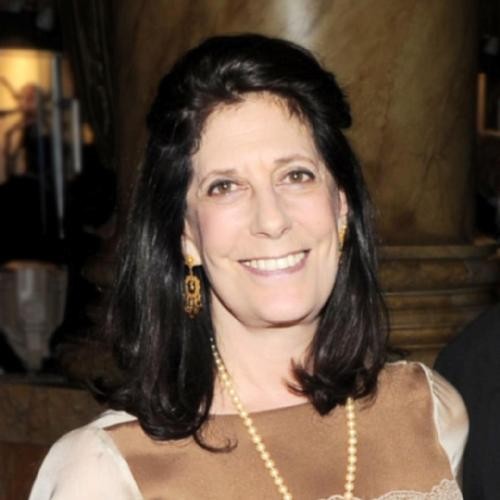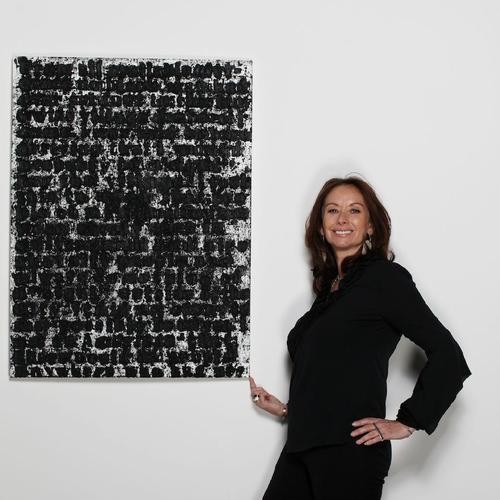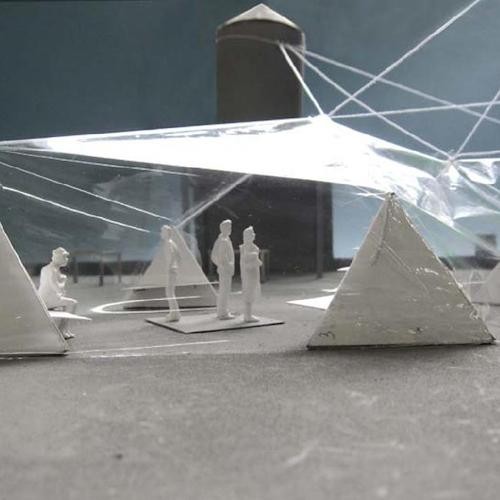This week New York's growing May fair landscape sees another green shoot burst forth with the opening of Collective, a new design fair showing a boutique mix of galleries and designers, all selected by the group of design veterans and upstart curators that makes up the event's namesake "Collective." These 23 exhibitors, hailing from both New York and the international scene, are now filling Pier 57 with cutting-edge design, vintage pieces, and pop-up exhibitions that speak to a broad scope of ingenious creativity. As for the Collective's members—just as curated a bunch—they include gallerist Helen Toomer, collector and Grey Area co-founder Kyle DeWoody, longtime Architectural Digest editor Sarah Medford, and Artspace's own curator, Nessia Pope.
On the occasion of the fair's debut, we spoke to architect and Collective founder Steven Learner about the thinking behind the event—and why New York is due for another design fair.
To begin with the most basic question, what inspired you to create a new design fair for New York? Why does the city need another one?
New York is one of the most creative cities in the world—it’s essential to the history of modern art and design, and also home to many great designers, artists, and collectors. We want to share the energy and excitement of New York with all our visitors. Collective is the first New York design fair of this caliber that focuses exclusively on 20th- and 21st-century material.
The very title of your new fair indicates that this is a collaborative, community-based event. Could you explain what the "Collective" behind the fair is, and how the members came together?
The Collective started with a passionate group of designers, curators, collectors, and gallerists who all recognized the need for a new commercial and educational platform for design here in New York. As our plans have evolved, we’ve gotten great support from the creative community in the city—the art and design communities, especially.
What makes this kind of "collective" approach appealing at this point in time?
The diversity of our backgrounds and points of view has been our strength. The fair was conceived and designed with many different perspectives in mind, from the casual visitor to the design patron to the architect or designer to the exhibitor. And we want Collective to be inclusive, so that visitors can come to the fair and walk away with anything from a vintage Swedish chair to a t-shirt made by a young designer.
You have a wide range of exhibitors participating in this inaugural edition, hailing from cities as far-flung as Stockholm and Johannesburg. What was the selection process for the fair? Is there a particular aesthetic that unites the exhibitors?
The members of the Collective met for lunch one day and bounced ideas around, developing a wish list of the galleries we would all like to see exhibiting together. We made a point to invite a mix of established galleries and newer entries that would be fresh and dynamic. Personally, I’m really excited about the quality and quantity of galleries that are joining us for this inaugural year.
How did you persuade exhibitors to sign up? And, considering that a full 14 exhibitors are New York dealers, what appealed to them about participating in a design fair in their own city?
Everyone we spoke with wanted to be a part of a new fair in New York. By including the dealers that were part of the Collective in the fair, we let other galleries know that this would be an inside job, so to speak—a fair being developed by dealers and designers, all having input on how it would be structured, run, and seen. We’ve also done special outreach to the architecture and design community, as well collectors and curators, so our audience is exactly who these galleries want to meet. Collective is giving them the opportunity to start from the beginning and participate in making this a successful, recurring fair. And one with a bonus for New York dealers: they can sleep in their own beds at night!
You have timed the debut of the Collective fair to take place at the same time as the Frieze New York contemporary art fair, evidently with the idea of courting a slice of their international collector audience. What kind of overlap is there between collectors of design and collectors of contemporary art?
You need an Ico Parisi sofa below that Richard Prince joke painting! Art collectors and design collectors are often one and the same, especially when it comes to contemporary work. People want to live with the visual culture of their time. Collective will give art lovers great exposure to the best vintage and contemporary design, and some of the designers themselves, in the market.
The Cooper-Hewitt is the "official cultural partner" of the inaugural fair. What does that mean, and how did they become involved?
The Cooper-Hewitt is the National Design Museum, and it’s part of the Smithsonian, it’s devoted exclusively to historic and contemporary design, and it’s in Manhattan. I’ve known Caroline Baumann, the acting director, for many years, and she was one of my early supporters and Collective members. It seemed obvious to me that Cooper-Hewitt should be involved with the fair, since Collective is as much about educating people on design as it is about commerce. Cooper-Hewitt will offer daily tours, starting at noon each day, for the run of the Fair.
The design-fair landscape in New York has proven daunting to others in the past, with France's Pavilion of Art and Design launching a satellite fair in the city in 2011 and then retreating immediately afterward, being replaced by the Salon of Art and Design. How will Collective ensure it becomes indispensable in the city?
New York is a great international design hub, and it’s increasingly important to have events like this to bring world-class talent to New York. Just as the art community has grown as a result of the international art on view in New York, the design community can benefit from more of this kind of exposure.
Your architecture and design firm, Steven Learner Studio, created the fair's 70,000-square-foot space at Pier 57. What can we expect design-wise? What guided or inspired your vision for the fair's layout, and how did you shape it to best spotlight design?
Pier 57 is an amazing slice of old New York. It provides a quintessential downtown setting, with 20-foot ceilings and roll-up metal doors. The fair’s open floor plan offers visitors multiple paths through the space, creating optimum views of incredibly refined vintage pieces set against powerful industrial-scale architecture, for instance. I love juxtapositions like this.
As someone who has designed art galleries—including Sean Kelly and Blain DiDonna—and homes where design is displayed, what are the different considerations one needs to take into account when designing spaces for art and for design?
The three most important elements in designing for the installation of art and design are lighting, flexibility, and surrender. Balancing natural and artificial lighting is key to seeing and highlighting works of all kinds and scales. It is always important to allow for change and growth in a collection of art and design. Remember: collectors collect, meaning they are always acquiring more. And with that comes surrender. When we built a private museum for collectors in Connecticut, the client’s curator told me that, "No matter what you anticipate, they’ll always buy larger than you allowed for and more than you could ever plan for." It’s good to remember that going in to a new project.
What are you looking forward to most at the inaugural fair?
I am excited about the diversity of the exhibitors and the material they are all bringing. We have galleries from New York, Philadelphia, Paris, Stockholm, and Johannesburg. As important as the geographic diversity is the curated quality of the show, with established galleries side by side with younger names. And I’m looking forward to visiting a great design fair without having to leave home!























